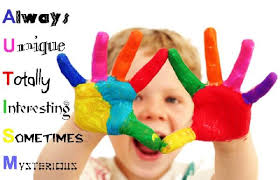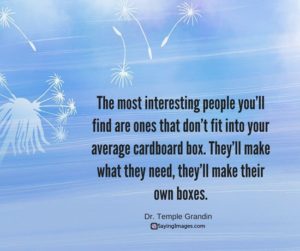Is Playtime a Sign?
For all adults in position to care for children: do you know when is the appropriate time to screen for neurological differences such as autism? And more importantly, how do you go about doing it?

According to the National Autism Association, there are new screening tools available for children ages 9 months to 30 months that will help determine whether the child should be recommended for developmental screening. This detailed questionnaire is designed to indicate the earliest signs of developmental differences in small children.
http://mchatscreen.com/wp-content/uploads/2015/09/M-CHAT-R_F.pdf
My question in this post is simple: Is it only the parent or guardians job to apply this screening tool and others like it at home or should it be implemented for more widespread use in preschool and daycare classrooms?
In an article on Slate, Zoe Kirsch writes “A toddler with autism can be identified by a guardian, a pediatrician, or someone in public services, like a school district employee. Under the Individuals with Disabilities Education Act of 1990, states are required to locate and evaluate all kids with disabilities, including those as young as infants.” Armed with the knowledge that the state will take action if given a recommendation, it follows for me that adults in the right position, such as a daycare worker who is responsible for the child for several hours of the day, should be on the lookout for the earliest symptoms presented.

There are several benefits to knowing the signs for autism in young children, which go far beyond understanding the behavioral differences in kids with ASD. Recognizing the symptoms is only halfway- helping children to adjust to classroom and other social interactions should be the next step. Kirsch also wrote that “researchers at the New England Center for Children analyzed gains among dozens of children who began the same early intensive behavioral intervention at ages 1, 2, and 3, and found that those who started therapy youngest saw the most improvement.”
Early intervention is centered around helping children advance in the areas which are identified as neurological components of autism. According to the National Autism Association, these areas include social, cognitive, communicative, and behavioral differences, which present themselves in many ways and could potentially be misconstrued as bad behavior.

The Modified Checklist for Autism in Toddlers is particularly suited to daycare and preschool classrooms as the children will exhibit signs of neurological differences during interactions with other children and adults of authority. I think it is important that adults are able to recognize, accept, and adapt their way of teaching to benefit not only their neuro-typical students, but the neurologically different as well.
Other sources:
http://www.slate.com/articles/life/education/2017/11/we_should_test_all_2_year_olds_for_autism.html
Great post, go team six!
Awesome insight on brand new research!
I think this is a really important topic, and I think you covered it well! We saw in Professor Robison’s auto-biography how discovering his diagnosis really affected his self image after being viewed in the eyes of people over the years as simply having behavioral issues. Identifying a child’s diagnosis could help them understand themselves and grow in a healthy manner. They would also then be able to find the resources they need to prosper. Therefore, this early screening is a very beneficial tool to aid in the lives of so many adolescents in their school years and later on into adulthood!!
Your blog post was very interesting and I agree with many points you made. I had always thought it was the parent’s responsibility to screen their child for autism, since it may be regarded by many as a personal matter; however, I can definitely see the advantages to having daycare workers and other childcare professionals be on the lookout for signs of autism as well, especially because these adults are able to observe the child interact with his/her peers for a large portion of the day. Additionally, making these childcare professionals aware of signs of autism may better their approach to children on the spectrum in a way that will suit their needs more. Overall, I agree with your point that it would be beneficial to introduce more awareness and screening techniques to adults working in childcare.